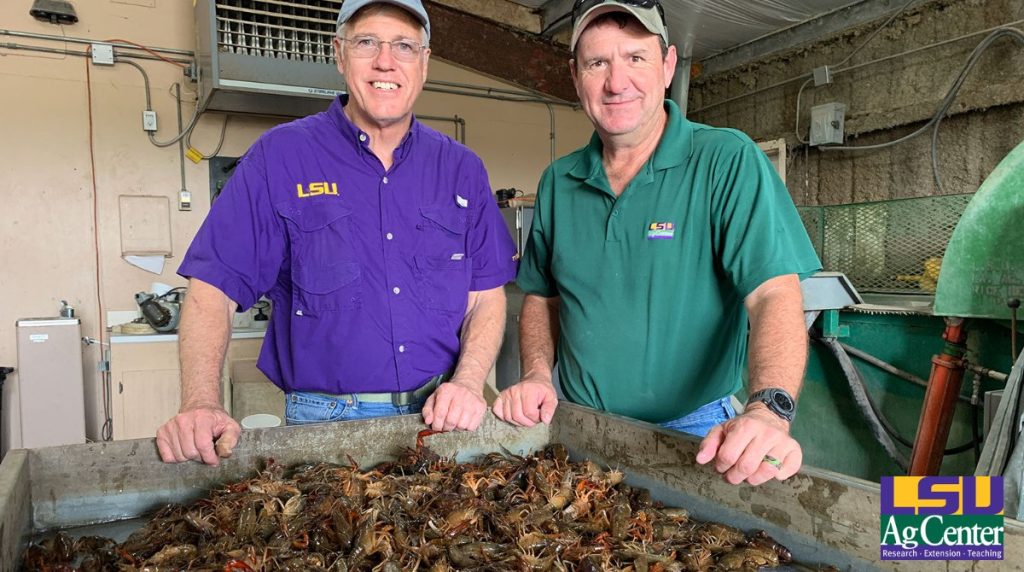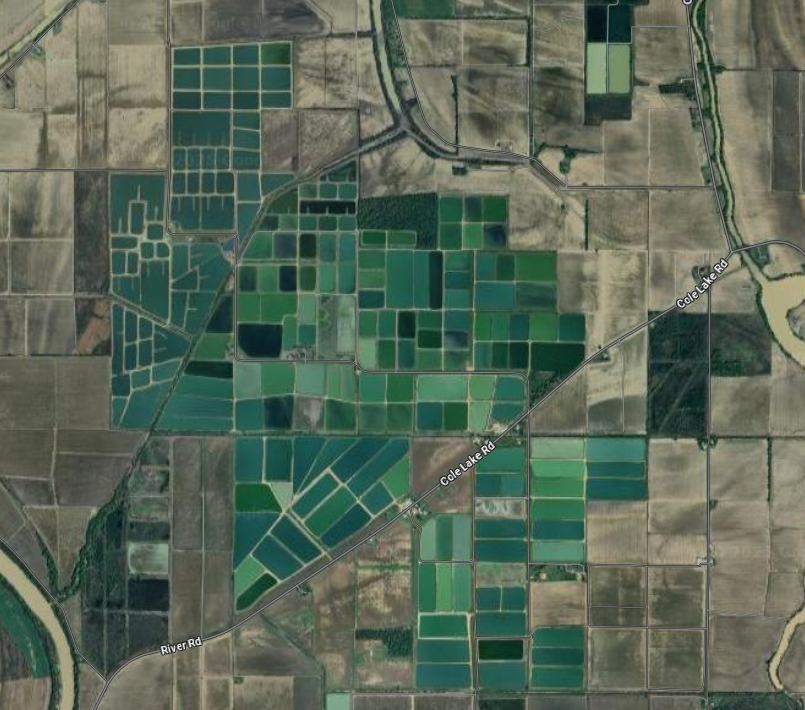Aquaculture in the Southern United States: Louisiana & Mississippi
Aquaculture has become a cornerstone of food production and rural economic growth across the Gulf Coast. In Louisiana and Mississippi, the industry reflects both states’ deep-rooted connections to water, fisheries, and agriculture. With abundant water resources, a favorable subtropical climate, and established research networks, the region is well-suited for diverse and productive aquaculture operations.
Louisiana and Mississippi rank among the top aquaculture producers in the United States, collectively contributing hundreds of millions of dollars annually to the Gulf Coast economy. Mississippi remains the nation’s top catfish producer, responsible for nearly half of all U.S. farm-raised catfish, while Louisiana leads the country in crawfish production, supplying over 90% of the nation’s farm-raised crawfish.
Beyond these signature species, both states support an array of operations that include oysters, tilapia, hybrid striped bass, shrimp, turtles, and ornamental fish, reflecting a balance of inland and coastal aquaculture.
Louisiana
When you typically think of aquaculture in Louisiana, one species tends to always pop up: the beloved crawfish (crawdad, crayfish, mudbugs, yabbies). Louisiana’s crawfish industry is both an economic powerhouse and a cultural symbol. More than 1,600 crawfish farmers and fishermen produce an estimated 150–200 million pounds annually, contributing over $300 million to the state’s economy. While a significant amount of crawfish are harvested from the wild in marshes and swamps, farm-raised crawfish are typically cultivated in flooded rice fields or specially designed ponds, using a sustainable rotation system that improves soil health and supports biodiversity. In late spring, crawfish ponds are drained to promote mating and burrowing, and a forage crop such as rice is planted in the dry pond. The rice grows through the summer and is harvested in early fall. Before the ponds are refilled, the soil is disked and smoothed to create a suitable seedbed. When the ponds are re-flooded (typically in October) the change in water conditions triggers the hatching of young crawfish, beginning the next production cycle.
Besides crawfish, Louisiana is a top producer of alligator aquaculture, supplying much of the United States with alligator meat and hides. Oyster aquaculture is also taking root in Louisiana. With the constant pressure on wild oysters, oyster aquaculture (both off-bottom and on-bottom) has helped alleviate any extra stress and has added to the filtering potential of the Mississippi Delta and the bayous around Louisiana. Louisiana also maintains a smaller but significant catfish, shrimp, and turtle sector that serves local and regional markets.
In Louisiana, the combined aquaculture sector contributes hundreds of millions in annual sales and supports thousands of jobs in coastal and inland parishes. With its wide range of environments (salt, fresh, marsh, bayou), it is no wonder that Louisiana is a top aquaculture state.
Universities like Louisiana State University conduct research to improve aquaculture practices, focusing on disease management, nutrition, genetics, and environmental sustainability. These efforts help producers address challenges and adopt innovative technologies, ensuring the long-term viability of the industry.
| Louisiana Aquaculture | ||||||
| Category | 2017 Farms | 2017 Value* | 2023 Farms | 2023 Value* | +/- Farms | +/- Value |
| Catfish | 9 | $490 | 15 | $3,832 | 6 | $3,342 |
| Trout | 0 | $0 | 0 | $0 | 0 | $0 |
| Other Food Fish | 5 | $305 | 0 | $0 | -5 | -$305 |
| Baitfish | 2 | (D) | 16 | $360 | 14 | – |
| Crustaceans | 611 | $58,823 | 918 | $131,491 | 307 | $72,668 |
| Mollusks | 34 | $9,468 | 50 | $19,032 | 16 | $9,564 |
| Ornamental Fish | 6 | $89 | 17 | $183 | 11 | $94 |
| Sport/Gamefish | 6 | $2,788 | 18 | $2,073 | 12 | -$715 |
| Other Aquaculture | 41 | $61,500 | 55 | $54,409 | 14 | -$7,091 |
| Total | 714 | $133,463 | 1089 | $211,380 | 375 | $77,917 |
* – Did not have info due to low number of farms
Mississippi
In Mississippi, aquaculture generates over $230 million annually in farm gate value and supports extensive secondary industries, including feed mills, hatcheries, and equipment manufacturers.
Catfish farming dominates Mississippi’s aquaculture landscape, particularly across the Mississippi Delta, where thousands of acres of ponds support the state’s largest aquaculture output. The catfish industry is one of Mississippi’s most important aquaculture sectors, contributing significantly to the state’s economy, employment, and food production. Mississippi leads the nation in farm-raised catfish production, accounting for more than half of the total U.S. output. The industry developed in the Mississippi Delta in the 1960s, where abundant water resources, fertile soils, and a warm climate created ideal conditions for catfish farming. Today, catfish farms cover tens of thousands of acres, producing hundreds of millions of pounds annually.
Catfish farming supports thousands of jobs across rural communities, from pond management and feed manufacturing to processing and distribution. Processing plants, many located near growing regions, provide stable employment and generate millions in economic activity. Catfish is also a major component of Mississippi’s agricultural exports and a key source of affordable, high-quality protein for consumers nationwide.
In addition to its economic benefits, the industry has driven research and innovation in aquaculture technology, including water quality management, disease control, and feed efficiency. Despite challenges such as rising production costs and foreign competition, the catfish industry remains a vital part of Mississippi’s agricultural identity and a cornerstone of U.S. aquaculture production. Ongoing research from Mississippi State
University and the Tilapia and striped bass are also grown commercially in Mississippi, but in a smaller, more regional scale. As with most coastal Gulf states, oyster farming has begun to sprout along the limited coastline of Mississippi.
University of Southern Mississippi supports innovation in feed efficiency, disease control, genetics, and environmental management. USM also has stock enhancement programs for local fin fish species and oyster facilities.
Aquaculture remains a vital part of Louisiana and Mississippi’s agricultural landscape. With strong traditions, innovative practices, and continued research, these states are well-positioned to maintain and grow their aquaculture industries, contributing to food security, economic development, and cultural heritage.
| Mississippi Aquaculture | ||||||
| Category | 2017 Farms | 2017 Value* | 2023 Farms | 2023 Value* | +/- Farms | +/- Value |
| Catfish | 205 | $219,720 | 142 | $243,936 | -63 | $24,216 |
| Trout | 5 | $3 | 2 | (D) | -3 | – |
| Other Food Fish | 0 | $0 | 1 | (D) | 1 | – |
| Baitfish | 6 | $241 | 4 | $4,192 | -2 | $3,951 |
| Crustaceans | 6 | (D) | 0 | $0 | -6 | – |
| Mollusks | 0 | $0 | 4 | $132 | 4 | $132 |
| Ornamental Fish | 3 | (D) | 0 | $0 | -3 | – |
| Sport/Gamefish | 25 | (D) | 16 | (D) | -9 | – |
| Other Aquaculture | 3 | $350 | 3 | $228 | 0 | – |
| Total | 253 | $220,314 | 172 | $248,488 | -81 | $28,174 |
* – Did not have info due to low number of farms
References
- Aquaculture in the Southern United States: Part 4-Louisiana & Mississippi - October 29, 2025
- Aquaculture in the Southern United States: Part 3 – Florida and Georgia - September 8, 2025
- Aquaculture in the Southern United States: Part 2 – Alabama & Arkansas - August 25, 2025


